Discovering Borgo Santo Pietro with Ariel Hagen
Unexpected dishes in a magical setting: the young chef opens the doors of the estate to us and anticipates some curiosities about the opening of Borgo Santo Pietro Saporium in Florence
Born in 1993, Ariel Hagen began his career in the kitchen of chef Nicola Dolfi. After several experiences in Tuscany, he decided to leave for Belgium at the Osteria Romana in Brussels, entered the world of French cuisine with Rocky Renaud's Le Passage (one Michelin star) in Ukkel, and then returned to Italy to the Dolomites with Norbert Niederkofler at St. Hubertus (three Michelin stars) during the years of the three-star conquest and the development of the Cook the mountain philosophy. His most recent experience as Sous Chef to mentor Gaetano Trovato at Arnolfo (two Michelin stars) in Colle Val d'Elsa, allowed his talent and passion to break free and create his own signature dishes.
About a year and a half ago, he arrived at Borgo Santo Pietro to exalt the art of farm-to-plate cooking that transcends the culinary sphere and applies to the entire estate and adjacent forest to create a self-sustainable environment with a zero-waste approach.
A fine dining experience that celebrates the juxtaposition of the most delicate dishes with unexpectedly filling creations: an emotional journey for the palate that also arrives in Florence with the opening of Borgo Santopietro Saporium.
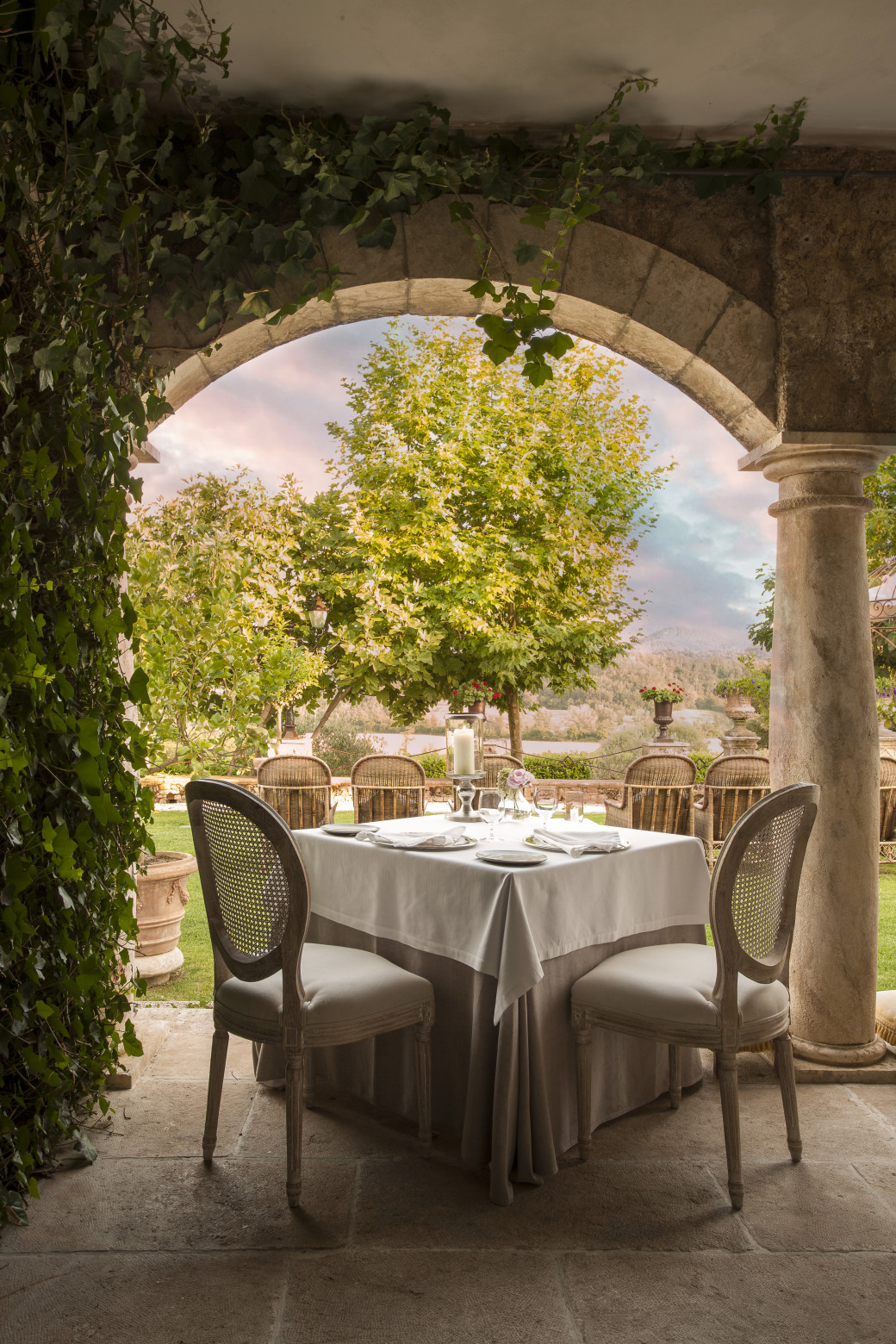 Borgo Santo Pietro
Borgo Santo Pietro 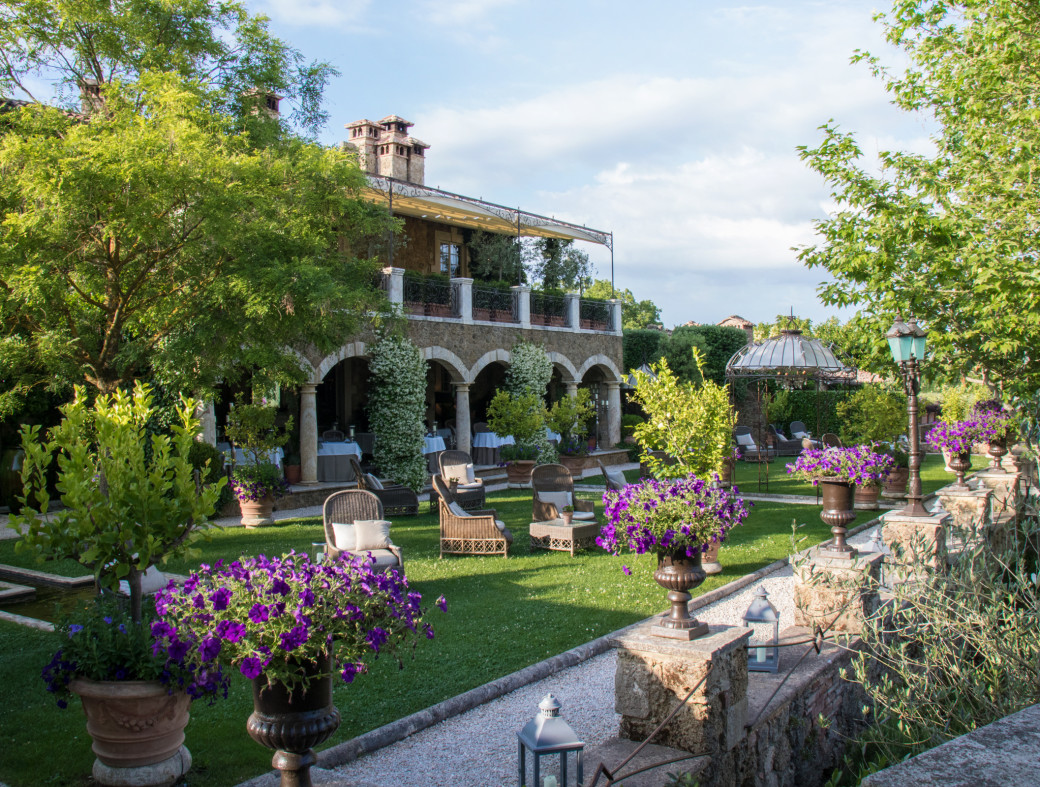 Borgo Santo Pietro
Borgo Santo PietroWe discover with Ariel his philosophy in the kitchen and what we can expect from this new opening in Florence.
Where does your love for cooking come from?
It stems from the taste and harmony of home. My grandmother wrote two books on cooking, especially Jewish cooking, and good food was never lacking in our house. I stopped going to school at an early age because I wanted to follow this strong passion I felt. Everything came from my instinct, I am self-taught, I started at a very young age, I was 16.
You are very young even now, what was your first experience?
It all started with a punishment (laughs). Since I didn't want to continue my studies, I started to go to the restaurant where my sister worked, La Taverna degli Assi under Piazzale Michelangelo, to Nicola Dolfi, who was my first teacher. I spent quite some time there and it was a really fundamental experience for me, there I learnt real Tuscan cooking, how to manage so many place settings, how to make fried food, sauces and stews, how to experiment and do so many tastings. My introduction into the world of cooking began there.
Then you came alongside Norbert Niederkofler at the St. Hubertus, what was it like working with him?
I would almost call it a love affair, ups and downs, but when you understand each other everything makes sense. It was very difficult, we were in the years of the third star and we didn't know it was coming. I can say that I became a man there. When I came in I was very young but he spurred me on, I had an endless list of things to do but on top of that I had to present a new mousse by noon every day. After so many days I didn't know what to do any more, so he gave me a book on vegetables - that's where my love for the vegetable garden was born, which I also rediscovered with Arnolfo - and I started to come up with ideas. A wonderful exercise that I always tell the guys who work with me, because it was a great challenge for me.
The last three and a half years at Arnolfo's court in Colle Val d'Elsa were very important for your professional growth, what did you learn from Gaetano Trovato's kitchen?
It was a truly wonderful experience. When I arrived, I had become junior sous chef at St. Hubertus, Gaetano immediately put me to the test in the kitchen, I presented three dishes, and a year later he told me 'but that cauliflower with pigeon, do you feel like doing it again? That's when I understood why he hired me, I had made him three dishes that he immediately fell in love with, two vegetarian and one pigeon which is his most iconic dish.
Now what is it like to lead such an important restaurant?
I realise that I hold something so big and important in my hands from what the customers tell me and the appreciation of the people who come to the restaurant. I always go around the tables as Gaetano taught me with the welcome, good appetite and good night. I'm in love with what I do, I'm young and I have a really close-knit group with me, there's a beautiful feeling between us.
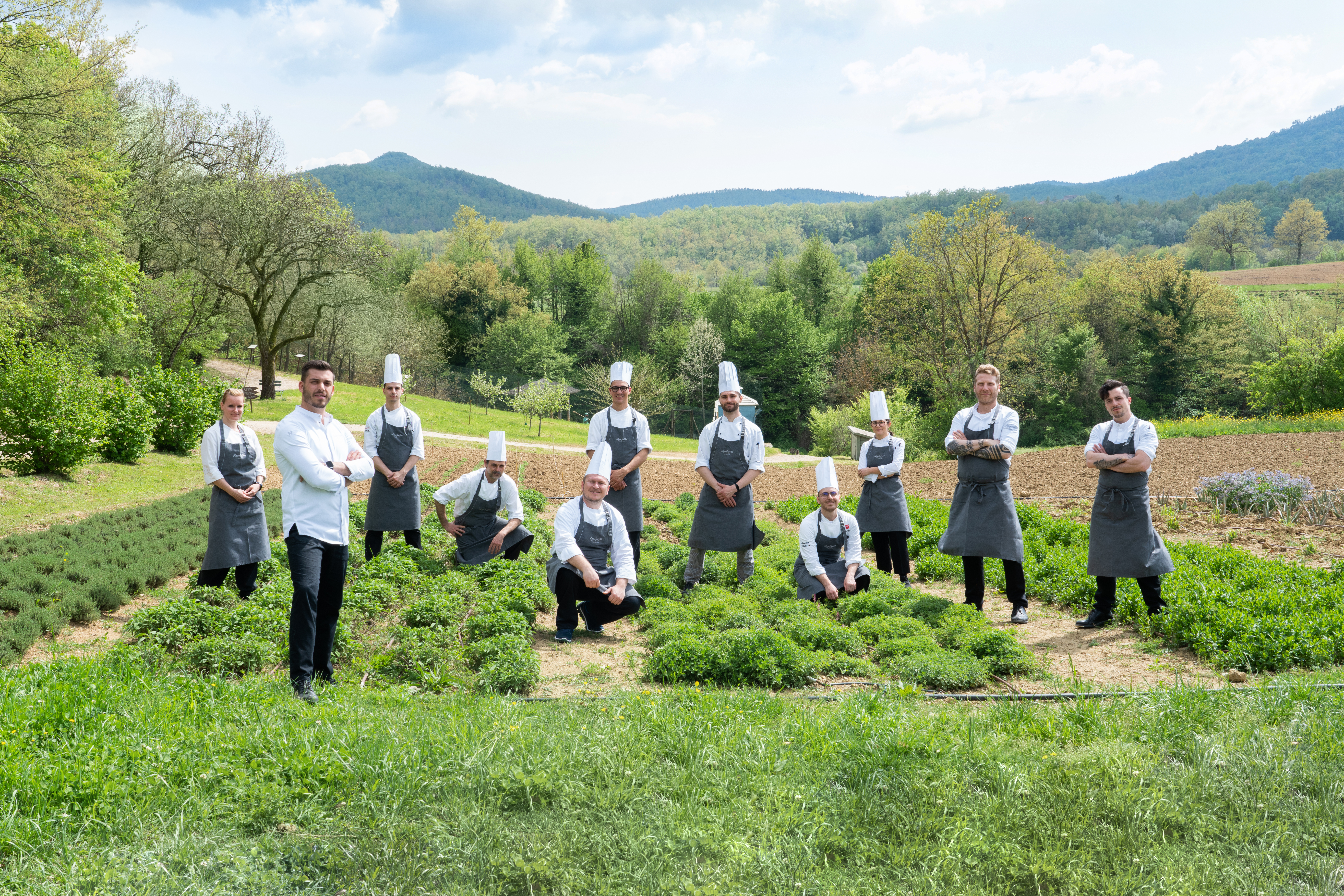 Ariel Hagen e la brigata a Borgo Santo Pietro, Chiusdino
Ariel Hagen e la brigata a Borgo Santo Pietro, ChiusdinoWhat dishes do you bring to your menu from your past experiences?
A lot of fresh pasta, at Gaetano's I perfected it a lot, for me it represents the Italian spirit, craftsmanship and humility of a cook. Fresh pasta in all its variations, in the elegance of making it, presenting it and cooking it. From stuffed pasta to tagliolini, all the way to the sfogliate and risottos that I learned to make in the wood-burning stove at the St. Hubertus. And red meat, game, and all the respect for the whole animal with the no-waste cycle.
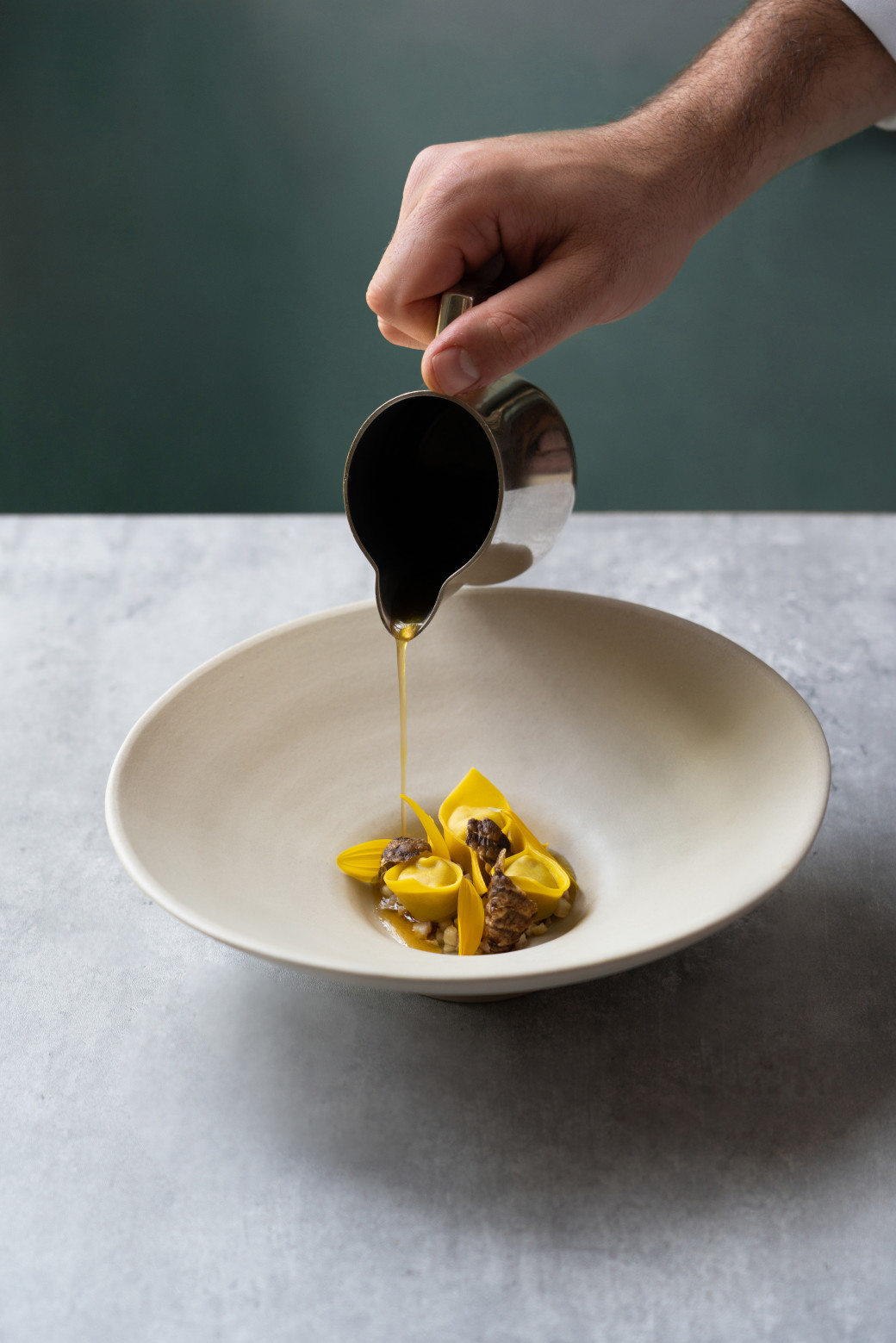 Alla scoperta dei piatti di Ariel Hagen
Alla scoperta dei piatti di Ariel HagenAccess to the estate, the large vegetable garden and the Borgo's crops gives you the opportunity to create a unique menu...
There is so much effort behind that garden and that estate, everything you see is work that starts a year before and for me it has a unique and special charm. You can use for example not only the cabbage, but also the leaves, the tuber, it gives me the opportunity to create whatever I want. It's a great blessing!
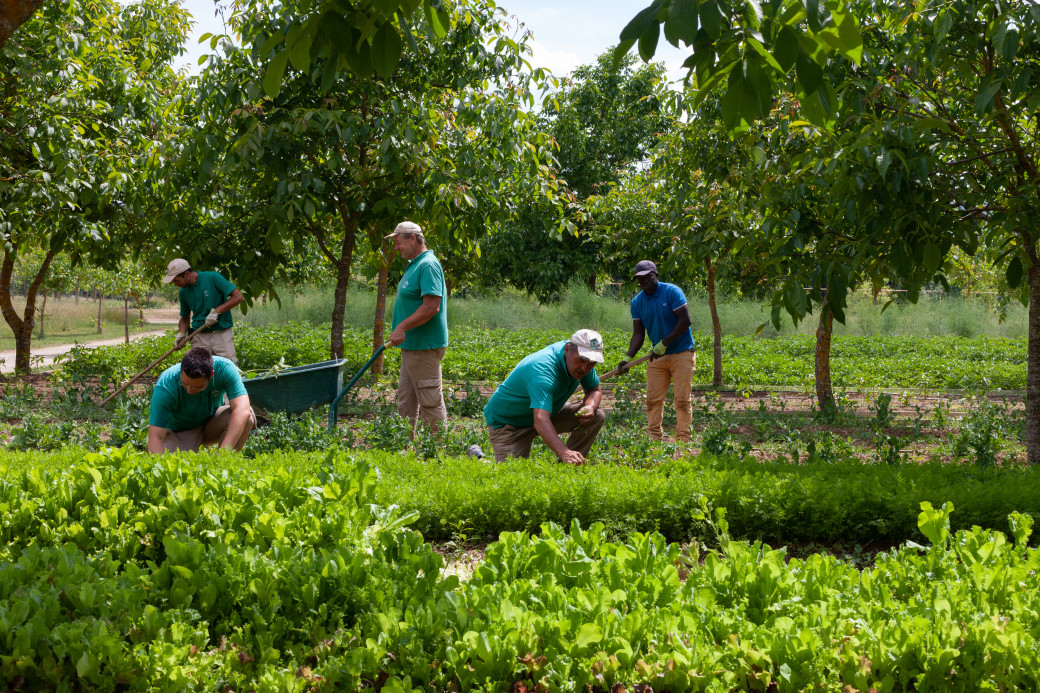 Tenuta Borgo San Pietro
Tenuta Borgo San PietroHow do you combine tradition and innovation in your cooking?
Tradition for me is fundamental, but the great thing is to play with tradition and always try to respect it, enriching it with the most modern techniques.
Three dishes that tell and identify your menu
Certainly the tagliolini with koji and elderflower is the dish that represents me the most, it is very emotional and elegant and recalls what I am. Then the stuffed pappardella, a dish I invented when I was at Gaetano's and which I linked to the traditional Tuscan pappardella, is a dish for all seasons. And finally the veal sweetbread, cranberries, bay leaves and whipped consommé.
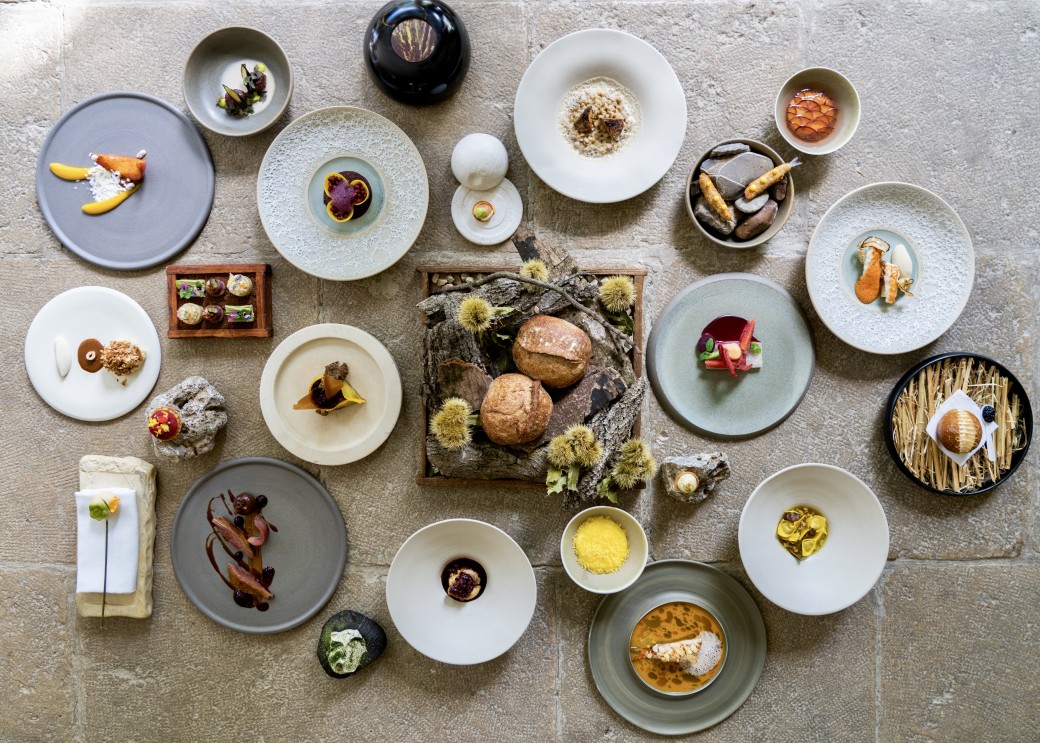 Alla scoperta dei piatti di Ariel Hagen
Alla scoperta dei piatti di Ariel HagenWhat we should expect from Borgo Santopietro Saporium in Florence?
My goal is to bring a bit of Borgo to Florence and let more people get to know the magic of this place, I want to bring my historical winter and spring dishes and continue the connection with our vegetable garden. The opening is planned for mid-January 2023.









